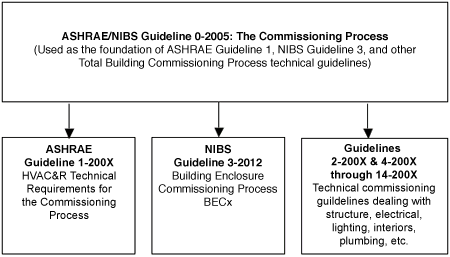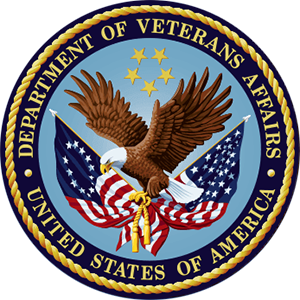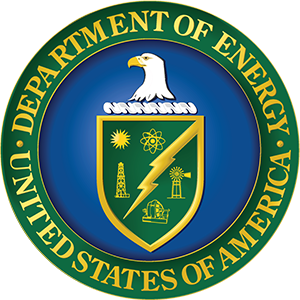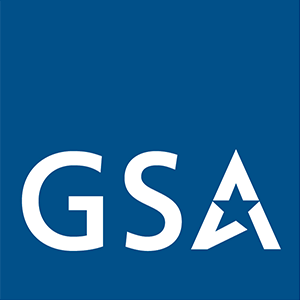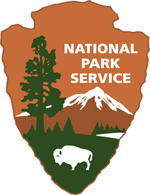Overview
Within This Page
Meeting performance objectives is a sustained effort from inception and planning, through turnover and operation, to assure the delivery of a project that satisfies all of the owner's functional requirements for the building and psychological requisites for space users.
The ability of a building to perform in a way that fully meets an owner's functional expectations and the psychological needs of its users—both qualitative and quantitative—requires a coordinated effort by a multi-disciplined team of experts who understand and apply a 'Whole Building' design approach.
Total Building Commissioning (TBCx) is one quality assurance process that takes all the systems of the "Whole Building" into account to assure that the building performs as intended. There are many aspects involved in assuring performance objectives are met; from assembling a qualified project delivery team; to adequately coordinating team member roles and responsibilities to instituting systematic quality assurance programs. See WBDG Building Commissioning.
The National Institute of Building Sciences (NIBS) Commissioning Industry Leaders Council (CxILC) is currently working with industry organizations to develop HVAC commissioning guidelines for various systems and assemblies.
Recommendations
Some practical ways to approach developing a proactive performance assurance program for a project include:
- Assure that appropriate programming occurs;
- Establish design objectives and priorities that will drive design concepts;
- Review "Lessons Learned" to leverage corporate knowledge and assure past mistakes are not repeated;
- Institute a project delivery quality assurance (QA) program;
- Understand the role of Facility Management and Operations; and
- Use Facility Performance Evaluations (FPE's).
Each of these topics is explored in more detail below.
Assure that Appropriate Programming Occurs
- Facilitate discussions with key stakeholders in establishing project requirements and goals.
- Facilitate a high level of communication between project team members during programming and throughout the facility development process.
- Identify mission critical programs and requirements.
- Clearly describe all functional needs and design intents.
- Communicate owners' special knowledge of what works well and what does not.
- Document all performance expectations.
- Address information technology (IT) and communication needs—both current and future.
- Incorporate infrastructure capability in the present that will accommodate and adapt for the programmatic needs of the future.
Establish Design Objectives and Priorities that will Drive Design Concepts
- Set performance goals for both building envelope and building systems.
- Look for unique aspects of the project to feature and enhance.
- Reconcile conflicting priorities (i.e. physical security vs. fire safety needs).
- Define qualitative and quantitative performance measures (e.g., design for sustainability, maintainability, functionality, etc.)
Review "Lessons Learned" to leverage corporate knowledge and assure past mistakes are not repeated
- Several organizations have compiled "Lessons Learned" on past projects and related information that are available in the following resources.
- GSA Lessons Learned Public Buildings Service, Office of Facilities Management and Services Program
- GSA Sustainable Facilities Tool and other Workforce Development resources
- NAVFAC Facility Quality Survey [requires NAVFAC account access]
- Comprehensive Facility Operation & Maintenance Manual
- VA Technical Information Library
- VA Design Alerts & Quality Alerts
- Establish systems design criteria that match the owner's maintenance capabilities
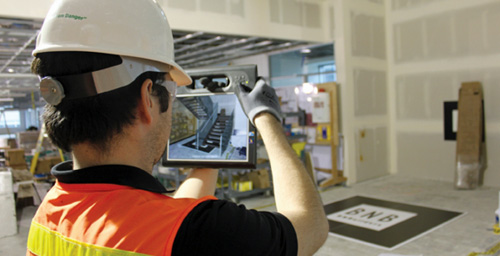
Electronic devices and tools can be used to design as well as construct and monitor and manage facilities once they are operational.
Institute a Project Delivery Quality Assurance (QA) Program
- At the beginning of a project, document the Owner's Project Requirements (OPR). This document describes the project needs in terms of measureable quality standards and metrics for performance. The OPR will align with the goals, needs, and priorities established during the programming phase.
- Hold design progress meetings on a regular basis. This helps the design to progress appropriately and facilitates communication among the owner, the design team, and other stakeholders.
- Conduct periodic design reviews. Typical milestones for review occur during programming, schematic design, design development, and the construction document phase. Participants in the design review process should include the owner and/or owner's representatives, maintenance and operations personnel, as well as the design team. The review participants need to possess appropriate design and technical expertise necessary to review the design and offer input.
- Hire an owner's representative, if necessary, to oversee performance assurance. The owner's representative should participate in design meetings and reviews. Some owners, such as state and federal agencies, large school districts, and other government entities, may have in-house representatives. If in-house representation is not available, consider hiring an owner's representative with design and construction knowledge.
- Create a system to track design decisions. Communicate/distribute the decisions to all project team members.
- As the design progresses, identify materials testing and project certification requirements. Include testing and certification requirements in the construction documents.
- Also during the design phase, determine if the building will be commissioned. Identify the systems to be commissioned, procedures to be followed, and tests to be used in the commissioning process.
- Prior to handing the building over to the owner, train facility operators on the building systems and interdependent functions.

This Environmental Management System (EMS) enables facilities engineering personnel to maintain comfort and ventilation levels at the high standards set by the stakeholders at the beginning of the project.
Understand the Role of Facility Management and Operations
- Involve O&M staff in all design phases. See WBDG Aesthetics—Engage the Integrated Design Process.
- Bring forward special knowledge and experiences of O&M staff into the design phases.
- Anticipate what it will take to maintain and operate the facility. See WBDG Sustainable—Optimize O&M Practices.
- Perform energy analysis in design phases; make sure operating budgets are addressed. See also WBDG Sustainable O&M Practices.
- Consider the unique aspects of operations and maintenance for historic structures. See WBDG Operations and Maintenance for Historic Structures
- Include O&M stakeholders as partners in the performance optimization program.
- Document O&M procedures that contribute to optimal facility performance.
Use Facility Performance Evaluations (FPE's)
- Seek feedback from users and include it in performance optimization efforts through Post-Occupancy Evaluations. AIA has post occupancy evaluations. Go to www.aia.org and search 'post occupancy evaluation.'
- Use prototypes to evaluate the performance of designs to be repeated.
- Assure functional reliability through continued monitoring and analysis, and acting to correct degradation. OMSI (Operations & Maintenance Support Information) is NOT monitoring and analysis. It is the "Operating Manual" so to speak. More
Related Issues
- Building Information Modeling, which includes systems information
- Building Commissioning procedures
- Total Building Commissioning
- Re-commissioning and Retro Commissioning
- Continuous Commissioning
- Computer-Aided modeling for predicting performance
- International Performance Measurement and Verification Protocol (IPMVP)
- Reliability-Centered Maintenance (RCM)
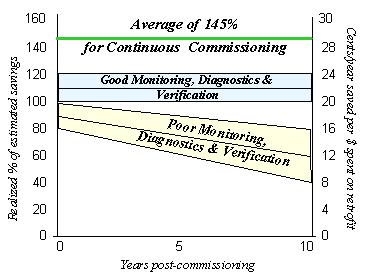
Savings from Continuous Commissioning Program in laboratory building at Texas A&M University
Relevant Codes and Standards
- Standards for Whole Building Functionality and Serviceability, 3rd Edition by ASTM. 2000. ASTM Stock #: WBDG2009, ISBN13: 978-0-8031-8006-2.
Additional Resources
Publications
- Adding Value to the Facility Acquisition Process: Best Practices for Reviewing Facility Designs by Ralph S. Spillinger in conjunction with the Federal Facilities Council, Standing Committee on Organizational Performance and Metrics, National Research Council. Washington, DC: National Academy Press, 2000. Report #139.
- Architecture in Use: An Introduction to the Programming, Design and Evaluation of Buildings by Theo JM van der Voordt and Herman BR van Wegen. New York: Elsevier, 2005.
- ASHRAE Guideline 0-2005 The Commissioning Process
- ASHRAE Guideline 1.1-2007 HVAC&R Technical Requirements for the Commissioning Process
- Assessing Building Performance by Wolfgang Preiser and Jacqueline Vischer. New York: Elsevier, 2005.
- Federal Facilities Council (FFC) Technical Report No. 145, Appendix A, Functionality and Serviceability Standards: Tools for Stating Functional Requirements and for Evaluating Facilities,
- Journal of Architectural and Planning Research (Vol. 1-18) edited by Andrew Seidel. Locke Science Publishing Co.
- Learning from Our Buildings by the Federal Facilities Council. Washington, DC: National Academy Press, 2001.
- NIBS Guideline 3-2012 Building Enclosure Commissioning Process BECx
Associations
- American Society of Heating, Refrigerating and Air Conditioning Engineers (ASHRAE)
- Building Commissioning Association (BCA)
- Building Owners and Managers Association International (BOMA)
- International Facility Management Association (IFMA)
- National Institute of Building Sciences (NIBS)
Tools
- GSA Sustainable Facilities Tool (SFTool)—SFTool's immersive virtual environment addresses all your sustainability planning, designing and procurement needs.

